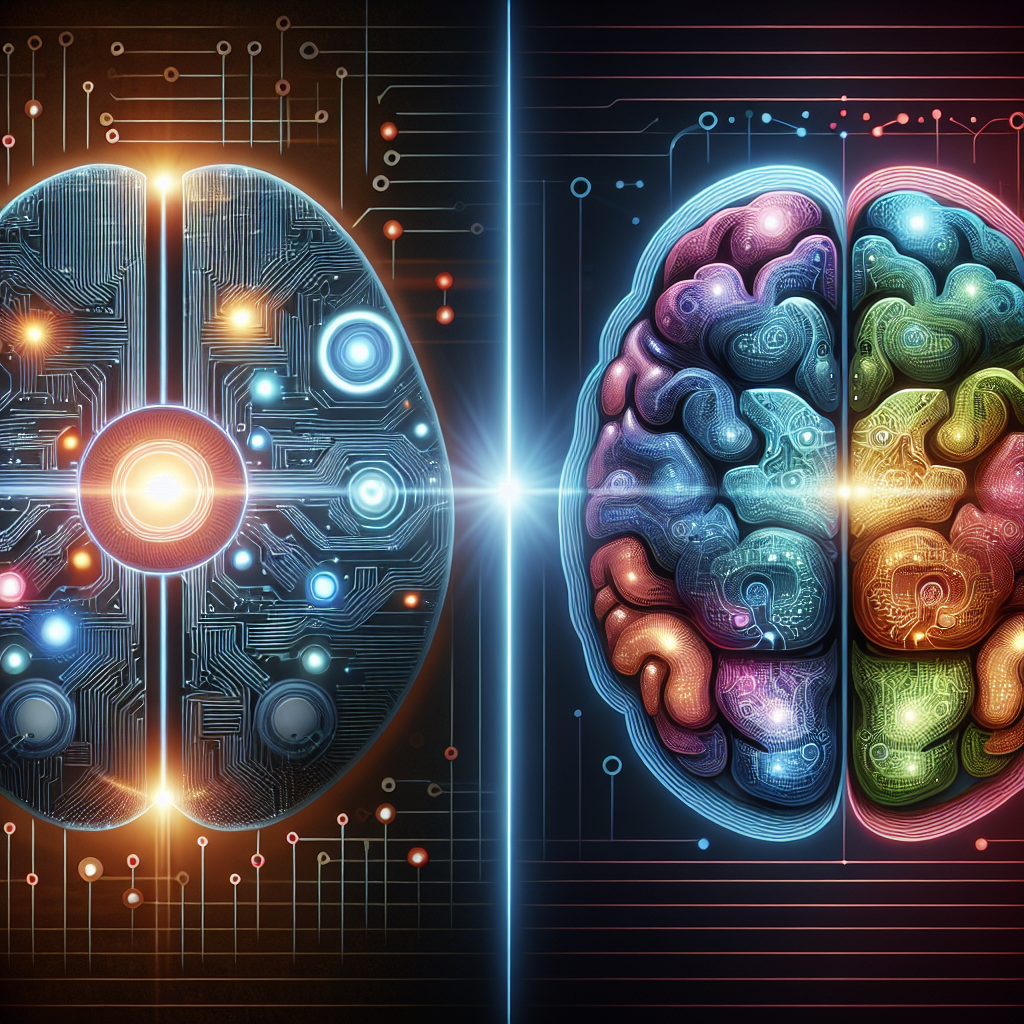AGI vs. Human Intelligence: Examining the Similarities and Differences
Artificial General Intelligence (AGI) is a term used to describe AI systems that possess the ability to understand, learn, and apply knowledge in a way that is similar to human intelligence. While AGI strives to replicate human intelligence, there are key differences between the two that set them apart. In this article, we will explore the similarities and differences between AGI and human intelligence, and discuss how these differences impact the development and use of AI technology.
Similarities between AGI and Human Intelligence
One of the key similarities between AGI and human intelligence is the ability to understand and learn from experience. Both AGI systems and humans have the capacity to process information, make decisions, and adapt to new situations based on past experiences. This ability to learn and apply knowledge is essential for problem-solving and decision-making in both AGI and human intelligence.
Another similarity between AGI and human intelligence is the use of language and communication. Both AGI systems and humans use language to convey information, express ideas, and interact with others. Language is a fundamental aspect of intelligence, as it allows for the sharing of knowledge and the exchange of ideas.
Additionally, both AGI and human intelligence rely on perception and sensory input to interact with the world around them. AGI systems use sensors and cameras to perceive their environment, while humans rely on their senses of sight, hearing, touch, taste, and smell to gather information about the world. Perception is crucial for understanding and responding to the world, and both AGI and human intelligence use it to make sense of their surroundings.
Differences between AGI and Human Intelligence
Despite the similarities between AGI and human intelligence, there are also significant differences that set them apart. One of the key differences is the way in which AGI systems and humans process information. While humans rely on biological brains to process information, AGI systems use algorithms and computer processors to simulate intelligence. This difference in processing power and speed gives AGI systems the ability to analyze vast amounts of data and perform complex calculations at a much faster rate than humans.
Another difference between AGI and human intelligence is the way in which they learn and adapt to new information. While humans have the ability to learn from experience, AGI systems are designed to continuously improve their performance through machine learning algorithms. These algorithms allow AGI systems to analyze data, identify patterns, and make predictions based on past experiences. This ability to learn and adapt in real-time is a key advantage of AGI systems over human intelligence.
Additionally, AGI systems are not limited by the same physical and cognitive constraints as humans. While humans are bound by the limitations of their biological bodies and brains, AGI systems can be scaled up or down to meet the demands of a given task. This flexibility allows AGI systems to perform tasks that are beyond the capabilities of human intelligence, such as analyzing complex data sets or performing repetitive tasks with precision and accuracy.
Impact of Differences on AI Development and Use
The differences between AGI and human intelligence have significant implications for the development and use of AI technology. AGI systems have the potential to revolutionize industries and transform the way we live and work. From autonomous vehicles to medical diagnosis and treatment, AGI systems have the ability to perform tasks that were once thought to be the exclusive domain of human intelligence.
However, the development of AGI also raises concerns about the impact on the job market and society as a whole. As AGI systems become more advanced and capable, there is a risk that they could replace human workers in a wide range of industries, leading to job displacement and economic disruption. Additionally, the use of AGI in areas such as healthcare and criminal justice raises ethical and legal concerns about privacy, accountability, and bias.
FAQs
Q: Can AGI systems think and reason like humans?
A: While AGI systems are designed to simulate human intelligence, they do not possess the same level of consciousness or self-awareness as humans. AGI systems can perform tasks that require reasoning and decision-making, but they do not have the same understanding or awareness of their actions as humans.
Q: How are AGI systems trained to learn and adapt?
A: AGI systems are trained using machine learning algorithms that analyze data, identify patterns, and make predictions based on past experiences. These algorithms allow AGI systems to continuously improve their performance and adapt to new information in real-time.
Q: What are the ethical implications of using AGI technology?
A: The use of AGI technology raises ethical concerns about privacy, accountability, and bias. As AGI systems become more advanced and capable, there is a risk that they could be used to infringe on individual rights or perpetuate social inequalities. It is important for developers and policymakers to address these ethical issues and ensure that AGI technology is used responsibly and ethically.
In conclusion, AGI and human intelligence share many similarities in terms of their ability to understand, learn, and adapt to new information. However, there are also significant differences between the two, such as the way in which they process information, learn, and adapt. These differences have important implications for the development and use of AI technology, and raise ethical concerns about the impact of AGI on society. It is essential for developers, policymakers, and the public to consider these differences and work together to ensure that AGI technology is used responsibly and ethically.

